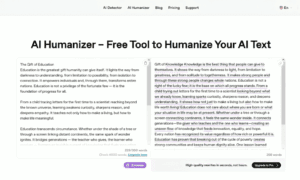Every business wants to close more deals, hit ambitious revenue targets, and grow market share—but none of that happens without the right leads. Sales success starts with the ability to consistently identify and attract leads who are not just interested, but ready to buy. In a competitive market where sales cycles are tightening and decision-makers are overloaded with options, companies need a reliable process for generating sales-ready leads that convert efficiently.
Better leads for faster conversions. That’s the goal every sales and marketing team shares, yet achieving it requires more than just casting a wide net. Instead, it demands strategic alignment between marketing activities and sales objectives. Sales-ready leads are qualified prospects who not only fit your ideal customer profile but also demonstrate a clear intent to make a purchase. These leads are further down the funnel and can be nurtured into customers faster, leading to shorter sales cycles and higher close rates.
To generate these high-quality leads, you must start by tightening your targeting. Use data to define your ideal customer profile (ICP) based on factors like company size, industry, budget range, pain points, and past buyer behaviors. This helps you filter out noise and focus on prospects who are most likely to convert. Implementing a lead scoring system—based on firmographics, behavior, and engagement—also ensures your sales team spends time only on the most promising opportunities.
Next, prioritize content and campaigns that address specific stages of the buyer journey. Sales-ready leads often consume mid-to-late funnel content such as case studies, comparison guides, demos, webinars, and pricing pages. Make sure these assets are optimized for SEO and promoted through the right channels—email marketing, targeted social ads, industry partnerships, and high-intent search terms. The goal is to make your offering visible to prospects when they’re actively looking for solutions.
Sales and marketing alignment is also key. When marketing understands what “sales-ready” means in your organization, they can better tailor campaigns to attract the right leads. Regular communication, shared KPIs, and feedback loops help refine targeting and messaging. For example, if your sales team reports that a certain lead source converts poorly, your marketing team can reevaluate how that segment is being reached or qualified.
Investing in lead generation tools and platforms can also streamline the process. Tools like ZoomInfo, LinkedIn Sales Navigator, Apollo, and Clearbit provide detailed prospect data and buyer intent signals. Marketing automation platforms like HubSpot, Pardot, or Marketo can nurture leads with behavior-triggered emails until they are sales-ready. Integrating your CRM with these tools allows for seamless tracking, handoffs, and performance analysis.
Outbound strategies, when done right, are another powerful way to generate sales-ready leads. Cold outreach is far more effective when it’s personalized and informed by recent activity or shared interests. Use intent data and firmographic triggers to time your outreach and increase its relevance. Cold emails that refer to a recent event, industry trend, or competitor shift can grab attention and prompt a response from a lead who’s already primed for change.
Webinars, live demos, and product-led growth (PLG) strategies are excellent for creating high-intent interactions. A prospect who signs up for a webinar titled “How to Cut Operational Costs by 20% in 90 Days” is likely grappling with cost issues—and ready to talk. Offering free trials or limited product access also helps surface leads with immediate needs, giving your team the chance to follow up based on actual usage behavior.
Referrals and partnerships are another often-underutilized lead source. Happy customers and strategic allies can open doors to qualified buyers who already trust the referring party. Set up a referral program that incentivizes introductions and make it easy for partners to refer leads with clear landing pages or co-branded outreach templates.
Lastly, don’t underestimate the importance of speed. A lead that’s ready today may not be ready next week. Response time is critical when working with sales-ready leads. According to studies, leads contacted within five minutes are significantly more likely to convert than those contacted after 30 minutes or longer. Automating lead alerts and follow-up sequences ensures hot leads are engaged while their interest is high.
By tightening your ICP, aligning sales and marketing, leveraging smart tools, and acting with urgency, your business can consistently generate sales-ready leads that convert quickly and drive measurable growth. Sales success doesn’t just happen—it’s built on the back of better-qualified opportunities and a streamlined process for turning interest into revenue.

































